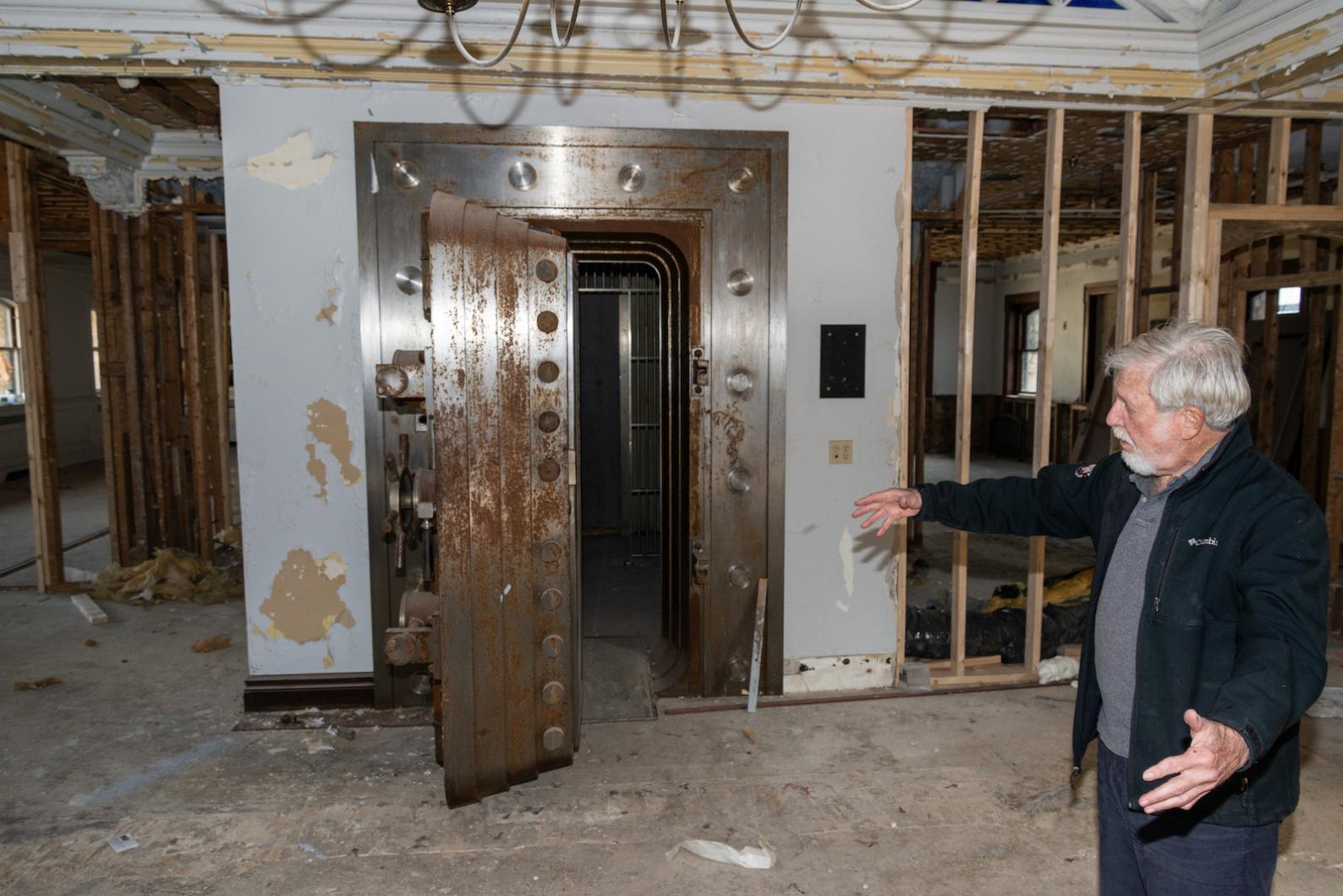A proposed 85-seat restaurant in a landmark Vineyard Haven building came before the Martha’s Vineyard Commission this week, in the first part of a public hearing that will continue in November.
Located in the 1905 Martha’s Vineyard National Bank offices at 75 Main street, developer Reid (Sam) Dunn’s planned fine-dining restaurant is the capstone to his redevelopment of the bank’s former property, generally known as the Stone Bank.
Mr. Dunn has already completed more than a dozen residential and business condominiums and the 70-seat outdoor Mexican eatery El Barco, leaving the former bank offices for last.
His original application for the Main Street restaurant included valet parking, but Mr. Dunn withdrew that element before Thursday’s hearing.
The restaurant would be open from 5 p.m. to 10 p.m. Mr. Dunn’s planned restaurant has a bar, hostess seating and a wine room in the former bank vault.
The vault door, he said, would become the top of a large dining table.
At Thursday’s hearing, commissioners and neighbors of the building expressed concern about the amount of traffic the year-round restaurant could bring to downtown Vineyard Haven, where businesses are not required to provide parking.
“I just think that people driving around in circles on Main street, up Church [street] and around isn’t a great idea,” commissioner Joan Malkin said, calling for a traffic study that includes all the downtown restaurants.
Peter Stam, the project’s next-door neighbor on Main street, said there are too many eateries already.
“There are already seven restaurants in the immediate vicinity … actually, eight if you count El Barco, Salvatore’s and Mad Martha’s,” he said. “The town is turning into a restaurant.”
Mr. Stam also criticized Mr. Dunn’s plans to store the new restaurant’s refuse in an outdoor enclosure along a walkway that leads past the building.
The odor from garbage would deter walkers from taking that pathway and encourage them to trespass on his family’s property, Mr. Stam said.
The commission detoured briefly from the future restaurant to hear from the owners of a residential condo in the Stone Bank complex that is directly above the El Barco kitchen on Union Court.
Chris and Diane Finney said they had no inkling that ventilation equipment for the taqueria would be installed on the side of their unit until the system — which did not appear on plans approved by the commission — was already in place.
“It proves to be a cautionary tale of a developer who may submit plans to the commission, but then in the field makes alterations and does what he wants,” Ms. Finney said.
“My husband and I are outraged. Our home has been devalued and impacted, and we feel our civil rights to enjoy our dwelling have been trampled on, and we are going to try to seek justice,” she said.
The Finneys were not present when commissioners last month opted not to hold a public hearing and retroactively approved the air-handling equipment.
On Thursday, hearing officer Douglas Sederholm encouraged the property owners to monitor commission agendas for future opportunities to testify.
“If there is any additional activity by the commission about El Barco, and I have no idea if there will be, we can’t necessarily notify you in particular, but please keep an eye on our website,” Mr. Sederholm said.
Returning to the Main street restaurant, Mr. Sederholm told Mr. Dunn that the town of Tisbury is planning a third-party inspection of the site to ensure it meets municipal codes.
“I guess they want to make sure that what you’re proposing is to code,” Mr. Sederholm said, before continuing the hearing to Nov. 7.
In other business Thursday, commissioners took up a demolition application from the owners of a decaying house in Oak Bluffs.
Built in 1901, the Gilkes house at 25 Oak Bluffs avenue is listed in the Massachusetts Cultural Resource Information System (MACRIS) because of its age, triggering commission review.
According to the Oak Bluffs Historical Commission, the house is a bare-bones example of the Camp Ground cottage building style, but is not part of a neighborhood of similar homes.
In a letter to the MVC, the historical commission surmised that the cottage had been moved from another location because it sits on a foundation, an uncommon feature in Camp Ground architecture.
Owner Robert Dias is not seeking to replace the house with another structure because he simply wants to sell the land, which is in tax arrears, attorney Geoghan Coogan said Thursday.
Mr. Sederholm closed the public hearing, with the written record remaining open until 5 p.m. Sept. 26.
Also Thursday, commission chair Fred Hancock announced that the Edgartown planning board has named Michael MacKenty to complete the MVC term of Christina Brown, who died in May.
Mr. MacKenty had a prior engagement Thursday but is expected to join the commission for its Oct. 3 meeting.






Comments (9)
Comments
Comment policy »